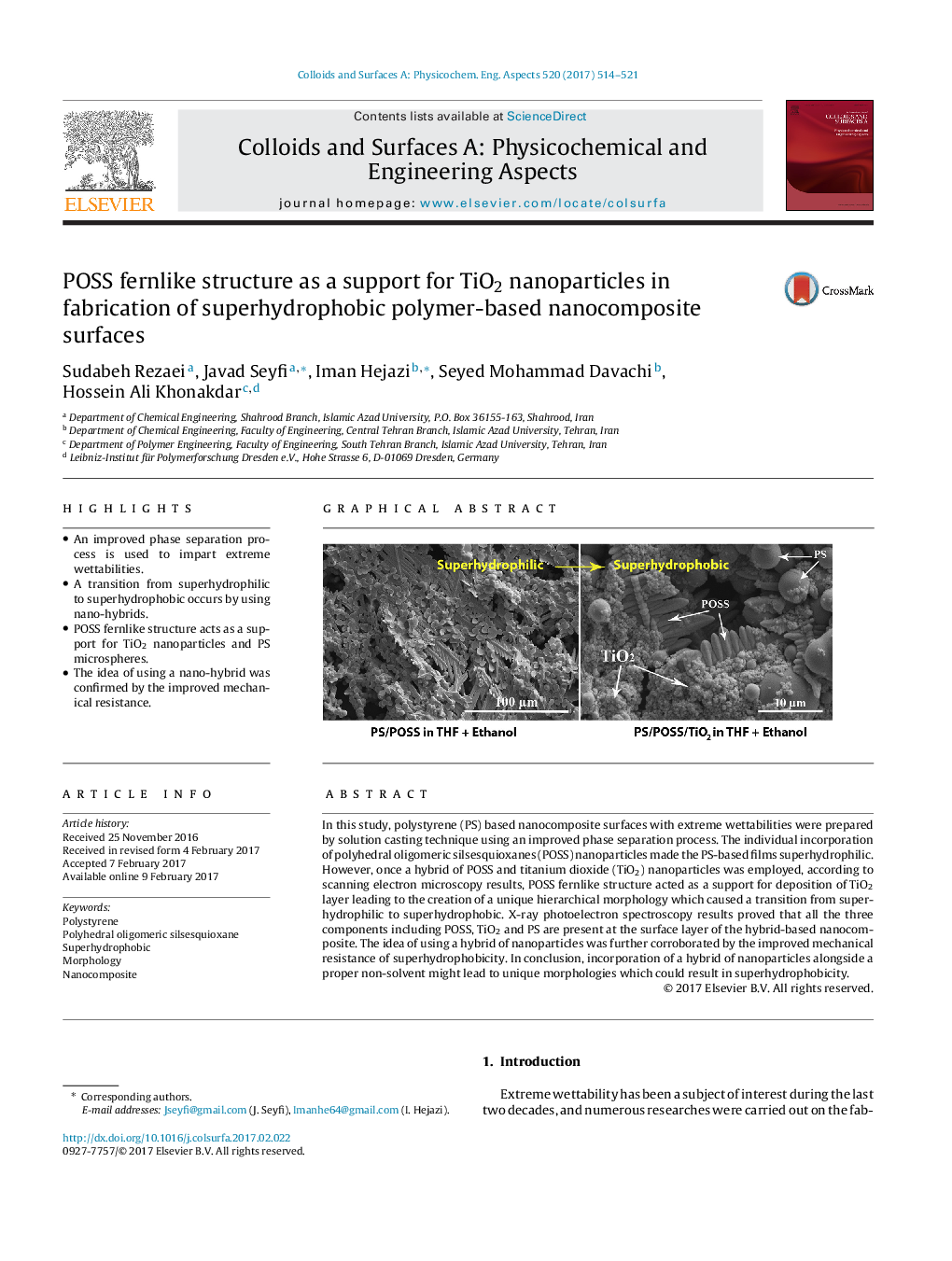| Article ID | Journal | Published Year | Pages | File Type |
|---|---|---|---|---|
| 4982158 | Colloids and Surfaces A: Physicochemical and Engineering Aspects | 2017 | 8 Pages |
â¢An improved phase separation process is used to impart extreme wettabilities.â¢A transition from superhydrophilic to superhydrophobic occurs by using nano-hybrids.â¢POSS fernlike structure acts as a support for TiO2 nanoparticles and PS microspheres.â¢The idea of using a nano-hybrid was confirmed by the improved mechanical resistance.
In this study, polystyrene (PS) based nanocomposite surfaces with extreme wettabilities were prepared by solution casting technique using an improved phase separation process. The individual incorporation of polyhedral oligomeric silsesquioxanes (POSS) nanoparticles made the PS-based films superhydrophilic. However, once a hybrid of POSS and titanium dioxide (TiO2) nanoparticles was employed, according to scanning electron microscopy results, POSS fernlike structure acted as a support for deposition of TiO2 layer leading to the creation of a unique hierarchical morphology which caused a transition from superhydrophilic to superhydrophobic. X-ray photoelectron spectroscopy results proved that all the three components including POSS, TiO2 and PS are present at the surface layer of the hybrid-based nanocomposite. The idea of using a hybrid of nanoparticles was further corroborated by the improved mechanical resistance of superhydrophobicity. In conclusion, incorporation of a hybrid of nanoparticles alongside a proper non-solvent might lead to unique morphologies which could result in superhydrophobicity.
Graphical abstractDownload high-res image (239KB)Download full-size image
